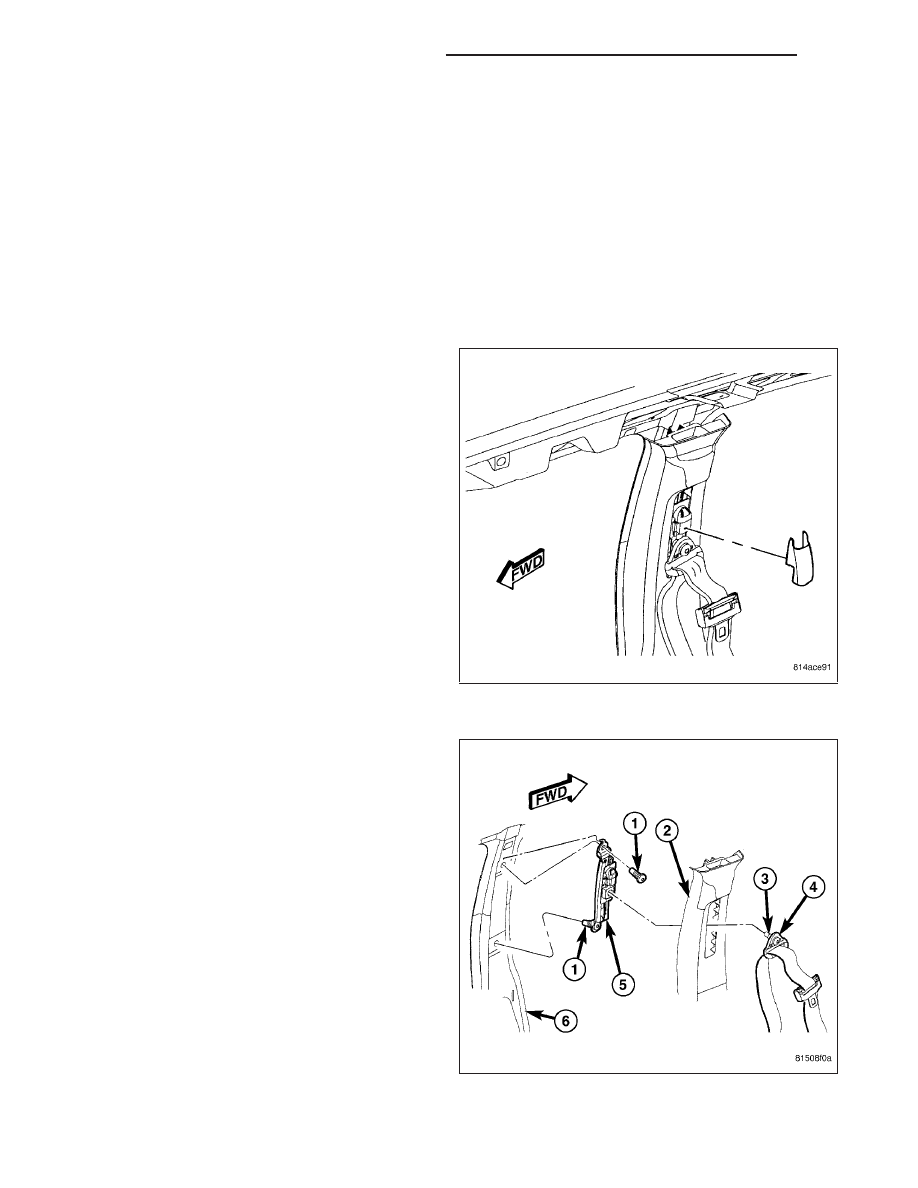Jeep Grand Cherokee WK. Manual - part 666

SEAT BELT TURNING LOOP ADJUSTER
REMOVAL
WARNING: To avoid personal injury or death, during and following any seat belt or child restraint anchor
service, carefully inspect all seat belts, buckles, mounting hardware, retractors, tether straps, and anchors
for proper installation, operation, or damage. Replace any belt that is cut, frayed, or torn. Straighten any
belt that is twisted. Tighten any loose fasteners. Replace any belt that has a damaged or inoperative buckle
or retractor. Replace any belt that has a bent or damaged latch plate or anchor plate. Replace any child
restraint anchor or the unit to which the anchor is integral that has been bent or damaged. Never attempt to
repair a seat belt or child restraint component. Always replace damaged or faulty seat belt and child
restraint components with the correct, new and unused replacement parts listed in the DaimlerChrysler
Mopar Parts Catalog.
1. Firmly grasp the lower end of the turning loop trim
cover on the upper B-pillar and pull it straight out to
unsnap it from the height adjuster, then lift the bot-
tom of the cover upward and pull outward to disen-
gage the upper tabs from the adjuster.
2. Remove the screw (3) that secures the seat belt
turning loop (4) to the height adjuster (5).
3. Remove the seat belt turning loop from the height
adjuster.
4. Remove the upper trim (2) from the inside of the
B-pillar (6). (Refer to 23 - BODY/INTERIOR/B-PIL-
LAR UPPER TRIM - REMOVAL).
5. Remove the two screws (1) that secure the height
adjuster to the inside of the B-pillar.
6. Remove the adjuster from the B-pillar.
8O - 486
RESTRAINTS - SERVICE INFORMATION
WK